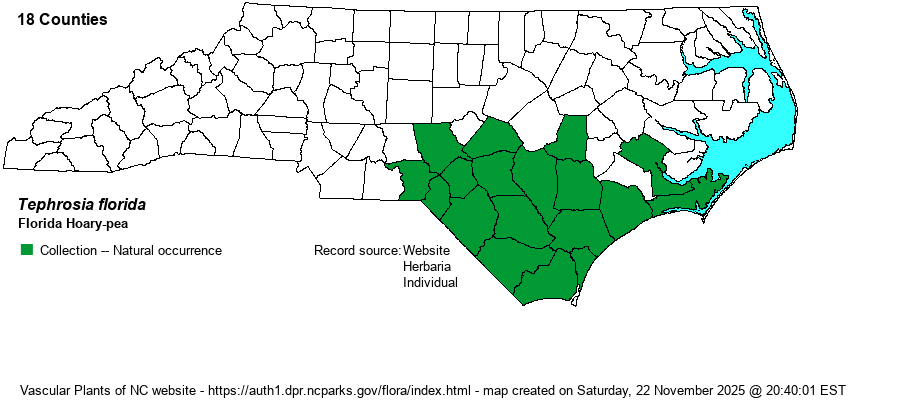| Author | (F. Dietrich) C. Wood | |
| Distribution | Throughout the southern 45% of the Coastal Plain, including the Sandhills region. Ranges north only to Moore, Harnett, Wayne, and Craven counties.
This is a Southern species, mainly limited to the Coastal Plain. Ranges north to southeastern NC, and south to southern FL and west to LA. The BONAP map, showing many records into the northeastern Piedmont of NC, is certainly incorrect. SERNEC specimens only range north to Harnett and Wayne counties. | |
| Abundance | Fairly common to locally common in the Longleaf Pine (Pinus palustris) belts in the Sandhills and also along the southern coastal region. Less numerous in the interior of the range, mostly uncommon to locally fairly common. | |
| Habitat | This is a species that grows mainly under open stands of pines, most often Longleaf Pine. It is most prevalent in pine flatwoods and pine savannas, but it also grows in sandhills seeps and other somewhat moist places in acidic soils associated with pinelands. |
| Phenology | Blooms from May into July, and fruits from June to September. | |
| Identification | The Tephrosia species (four in NC) are fairly small, erect to leaning herbs with pinnately arranged leaflets, including a single one at the end of the leaf (and thus odd-pinnate). This species grows to about 8-12 inches tall and is rather smooth. There are only scattered leaves, each about 4-5 inches long, divided into 9-17 very narrow leaflets. each about 1.5 inches long but only 1/3-inch wide. The petiole of the leaf is usually 1 to 4 times longer than the length of the lowest leaflet (i.e., the petiole is relatively long). The flowers grow on long stalks from leaf axils, that can be 5 inches long or more; these stalks are laterally flattened, an important character separating this species from the other three. The several flowers grow in a clump at the tip of the this stalk and are white at first, but then turn pink and finally crimson; each flower is about 1/2-inch long. In summary, this is one of three small Tephrosia species -- T. virginiana is much more robust and taller, but it can be told by the strongly flattened flower stalk and the long leaf petiole (noticeably longer than the leaflet lengths). This species is not too difficult to find in well-managed Longleaf Pine Forests, but mainly in damp ground of flatwoods, savannas, and seepages, as opposed to the drier and more upland parts of pine/scrub oak sandhills. | |
| Taxonomic Comments | None
| |
| Other Common Name(s) | Florida Goat's-rue | |
| State Rank | S3? [S4] | |
| Global Rank | G4G5 | |
| State Status | | |
| US Status | | |
| USACE-agcp | | |
| USACE-emp | | |

